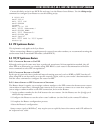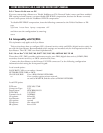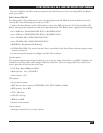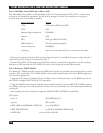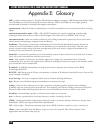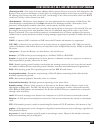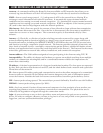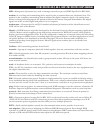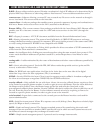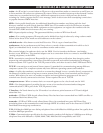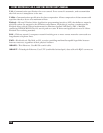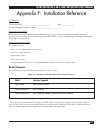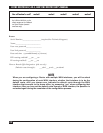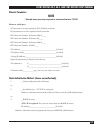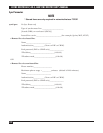
ASYNC ROUTER AR-P, AR-5, AND SYNC ROUTER USER’S MANUAL
123
MIB—Management information base, used to manage networks as part of SNMP. Specified in RFC-1098.
modem—A receiving and transmitting device used in pairs to transmit data over telephone lines. The
modem in the computer transmitting data modulates the digital computer signal to an analog form.
When receiving the analog signal, the paired modem in the remote computer demodulates the digital
signal out of the received signal and passes it to its computer.
modem port—Characterized by an RJ-11 standard telephone jack outlet and the identification word
LINE on the back of the Router.
Mosaic—A WWW browser originally developed by the National Center for Supercomputing Applications
(NCSA). Mosaic natively supports group and private annotation for WWW site entries, inline graphics
display, and context-dependent fonts. It can be configured to make use of external viewers for everything
from GIF images to MPEG movies, including digital stereo sound. Mosaic is an ideal application to access
the global Internet. It is distributed as freeware through FTP on the Internet and is available in a
commercial package from Spyglass Systems. Many IP applications vendors plan to or already have
licensed Mosaic.
NetWare—LAN networking software from Novell.
network—A group of computers physically linked together that can communicate with one another.
NIS—Network information service. Sun Microsystems’ second generation IP-to-host name mapping scheme.
It is similar to DNS.
network number—An identification used to group network nodes. All host on the same LAN share the
same network number.
node—A hardware device on a network. PCs, printers, and routers are examples of nodes.
NT-1—An NT-I is a hardware entity that provides an electrical interface between the user equipment and
the digital subscriber line.
packet—Term used for a unit of a data transmission envelope. The envelope contains to and from
addresses and control codes for handling the data contents.
PAP—Password authentication protocol. Provides a simple method for a peer to establish its identity using a
2-way handshake during initial link establishment. PAP is not a robust authentication method. Passwords
are sent over the circuit “in the clear”—that is, in text format—and there is no protection from playback.
ping—Packet internet gopher. A command that sends ICMP messages to test the existence of another IP
machine. Superior implementations return additional diagnostic information, such as round trip time.
protocol—Rule structure describing communication procedures on a network. Protocols pertain to
physical connections and transport level connections.
PPP—Point-to-point protocol, as specified in RFC 1661, was derived from the earlier work on serial-line IP
(SLIP). PPP is an efficient serial IP connectivity protocol that offers significant advantages over SLIP,
such as dynamic option negotiation and the ability tn carry multiple protocols.
PSTN—Public switched telephone network: the telecommunications service provider in your area.
rate adaption—The process of adjusting for different ISDN B-channel speeds. Even though ISDN
operates at a 64K line speed, many North American long-distance ISDN connections use leased lines that
operate at 56K, and the ISDN software must adjust for the different speeds.



